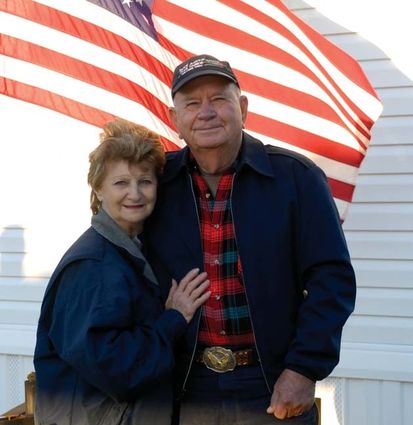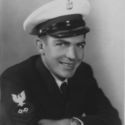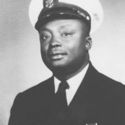Orange County sailors remember Pearl Harbor
Last updated 12/5/2012 at Noon
Imagine a beautiful sun rise on the Island of Oahu. It’s a peaceful Sunday morning with the ocean waves rolling up on to beach. It was quickly labeled as one of the darkest days in American history. What makes it worse is that the U.S. government knew that an imminent attack was coming.
On Dec. 7, 1941 at approximately 6 a.m., 183 Japanese planes took off from six aircraft carriers 230 miles north of Oahu. This was just the first wave that would hit Pearl Harbor. At 7:02 a.m., two Army operators at a radar station on Oahu’s northern shore detected the fleet of planes approaching. It was disregarded because several American B-17 planes were expected to come in from the U.S. west coast.
At 7:15 a.m., 167 more Japanese planes take off and head for Pearl Harbor. This was the second wave. The naval base was not put on high alert because the senior commanders felt that there was no reason to believe an attack was imminent. Aircrafts were parked wing tip to wing tip. Anti-aircraft guns remain unmanned and ammunition remained locked up. Also, there aren’t any torpedo nets protecting the fleet anchorage. Given that it was a Sunday, many officers and crewman were ashore.
At 7:53 a.m., the first wave of Japanese planes reached Pearl Harbor. The battle commences.
“It took us a while to wake up to what was really going on,” said Joseph Rougeau. Rougeau, who passed away in May 2012 was Navy Seaman 1st Class and was aboard the USS Medusa, a fleet repair ship that was docked at Pearl Harbor. Rougeau was eating breakfast when the attack started.
The first wave targeted airfields and battleships, the second targets ships and shipyard facilities. Japan modified their shells to use them as bombs and wooden fins were added to torpedoes to keep them from sinking in the shallow harbor mud. The air raid lasted until 9:45 a.m.
McKinnley Bland, of Orange, joined the United States Navy in 1939 at the age of 21 and served for 21 years. He started out as a seaman and retired as Chief Petty Officer. He was assigned to the USS Salt Lake City as a steward.
He was up on deck cooking and serving food to the officers. He could see what was going on outside the ship when the Japanese bombers started bombing Pearl Harbor. He saw the attack on the USS Arizona.
The Arizona sustained the most damage in the raid. She took four direct hits from Japanese bombers. The last bomb ignited a forward magazine causing a devastating explosion. The ship sank claiming 1,177 lives.
“Some of the men were already lying on the deck already killed,” he said. “I’m just a country boy. I ain’t never seen nobody killed.” Once the bombing commenced, the Salt Lake City sailed out to sea and stayed there for 110 days. After the 110 days, the Salt Like City was allowed to come back in to Pearl Harbor to restock their supplies.
It was a very surreal moment for Rougeau. The normal berth place was along side Fort Island. On Friday, the USS Medusa had to move to allow the USS Utah to have their preferred spot. Had the Utah not been docked there, the Medusa would have probably taken the hit. The Utah was hit by a torpedo at approximately 8:01 a.m. and capsized.
“You could see the smoke and oil on the water on fire.” Rougeau said that sailors were trying to swim on top of the water even though they had been taught to swim under the water, come up for short breaths and go back under.
“Some were just out of boot camp or panicked, they were just swimming on top sucking in smoke and fire into their lungs,” Rougeau said.
Rougeau went on to explain that they couldn’t send life boats down to the sailors because the boats were made of wood.
Cedric Stout, of Bridge City, was assigned to the Utah at the time of the attack. Stout was killing time looking out the porthole after breakfast.
“I saw all the commotion going on and thought, somebody’s having some fun. But then a bullet went phew, right over the top of my head and I knew it wasn’t no fun!” he said. “Almost immediately, torpedoes struck the port side of the ship and the superior officers were telling everyone to abandon ship, so I made it topside as quickly as possible. At the hatch, I saw my shipmates being cut down as soon as they got up there, so I held back.
“When it became apparent that the Utah was going to roll over,” said Stout, “we decided our chances were better dodging bullets than staying aboard to drown. We ran to the ropes that held the Utah at dock, slid down to the mooring, made our way to the island and scrambled for cover.”
Stout said one of his buddies who had run in the other direction became trapped in the ship’s bough when it overturned. He had a metal pipe he would hit against the ship to let people know he was there. He did that for seven days before being found when someone heard the banging. A hole was cut out of the hull to set him free, dehydrated, but alive. Fifty four sailors remain entombed in the USS Utah.
Eight battle ships are damaged, five of them sunk. Three light cruisers, three destroyers and three smaller vessels are lost along with 188 aircraft. The USS Arizona and the USS Utah were left where they sank and stand as memorials so that all will remember the fate of the crew that were claimed by the sea. The Arizona continues to leak oil from it’s hull and it is theorized that when the last living survivor from the Arizona dies, the oil will stop leaking.
The USS Oklahoma was damaged beyond repair. She took five torpedoes and capsized. Four hundred and twenty nine sailors were lost or are missing. She was pulled from the sea but never repaired. The Oklahoma was striped of her weapons and sold for scrap. In 1947, the Oklahoma sank in mid-tow 540 miles out from Pearl Harbor.
The United States lost 2,390 lives that day: 1,999 from the Navy, 109 from the Marine Corps, 233 from the Army and Army Air Force and 49 civilians.
During the time Bland and the rest of the crew on the Salt Lake City spent out at sea, the ship joined forces with a fleet of ships that escorted the Doolittle Raid mission. On April 18, 1942, 16 B-25 bombers were launched from the USS Hornet and the Doolittle Raid was the first attack on Japan during World War II.
“We escorted [the Hornet] into Japanese water,” Bland said. “It was kind of amusing to see all of these planes on deck, but after a while, they started taking off.” Bland explained that the planes were only a few inches from the water when the plane left the deck of the Hornet, but the pilots managed to keeps those planes in the air.
Bland received the Purple Heart due to a battle wound sustained during a skirmish with a Japanese battle cruiser near Guadalcanal.
“That Jap cruiser was anything but good,” he said. “It was mean!”
Bland spent a total of 21 years in the Navy before retiring. He then went on to work for the postal service for twenty years.
Rougeau was eventually transferred to a different ship that transported the Marine Corps to the invasion of Iwo Jima and Okinawa. Rougeau did not re-enlist when his tour was up, but he couldn’t leave due to the war.
“When the war was over, it didn’t take me long to get home,” Rougeau said. He then spent 36 years working for Parish Electric. Even though he is technically retired, he still works part time with the company.



















Reader Comments(0)